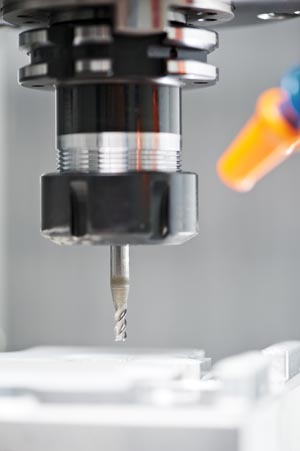How Computer Aided Manufacturing is Changing the World
To help develop this article, click 'Edit this article' above.
Computer Aided Design (CAD) and Computer Aided Manufacturing (CAM) machinery are found in all industries all over the globe. Many factory floors are now entirely void from human interaction, populated only by 'robots'. The introduction of Computer Numerical Control (CNC) machinery has enabled industry to not just cut back on manpower but also to produce a higher quality of precision parts that are entirely free from human error and cheaper.
CNC machining and milling does however require the precision of a trained CAD operator; this is where human intervention is still necessary. Behind every CNC lathe, drill, or machine there is a computer that is using CAD software to transmit the messages to the machine to tell it what to do. Behind that computer there is the software professional who programmed it, behind that the person who designed the software, and behind that the person who designed the computer in the first place.
Although a robot can carry out virtually any task required of it in the field of CNC engineering, highly trained professionals are required to monitor these robots and ensure they do what they are programmed to.
On a factory floor you will see many CNC lathes, drills, and machines at work, and no one anywhere to be seen. Some setups are left to run overnight by themselves; this is made possible by the fact that on detection of an error by the computer, the CAD software will shut down the machine in question until an engineer can attend.
Computer aided design is used in a huge range of applications in the modern world; from mass producing car parts to boring out metal tubes, CNC milling can quickly carry out tasks that it used to take people many hours to do. CAD software allows for further precision, and CAD design has virtually put an end to hand drawings; with precise vector lines being used by CAD software. The human brains are still present behind the design, but the human error is not.
CNC is changing the world that we live in, from something as simple as making a tin can perfectly round, to engineering aerospace parts. With every advance in technology, precision engineered parts can be made to higher specifications, with more complex designs, and without human error.
--Kristian 11:50, 25 May 2015 (BST)CAM Machine; Bringing you the best in CNC in Bristol
Featured articles and news
Boiler Upgrade Scheme and certifications consultation
Summary of government consultation which closes 11 June 2025.
Deputy editor of AT, Tim Fraser, discusses the newly formed society with its current chair, Chris Halligan MCIAT.
Barratt Lo-E passivhaus standard homes planned enmasse
With an initial 728 Lo-E homes across two sites and many more planned for the future.
Government urged to uphold Warm Homes commitment
ECA and industry bodies write to Government concerning its 13.2 billion Warm Homes manifesto commitment.
Places of Worship in Britain and Ireland, 1929-1990. Book review.
The emancipation of women in art.
CIOB Construction Manager of the Year 2025
Just one of the winners at the CIOB Awards 2025.
Call for independent National Grenfell oversight mechanism
MHCLG share findings of Building Safety Inquiry in letter to Secretary of State and Minister for Building Safety.
The Architectural Technology Awards
AT Awards now open for this the sixth decade of CIAT.
50th Golden anniversary ECA Edmundson awards
Deadline for submissions Friday 30 May 2025.
The benefits of precast, off-site foundation systems
Top ten benefits of this notable innovation.
Encouraging individuals to take action saving water at home, work, and in their communities.
Takes a community to support mental health and wellbeing
The why of becoming a Mental Health Instructor explained.
Mental health awareness week 13-18 May
The theme is communities, they can provide a sense of belonging, safety, support in hard times, and a sense purpose.
Mental health support on the rise but workers still struggling
CIOB Understanding Mental Health in the Built Environment 2025 shows.
Design and construction material libraries
Material, sample, product or detail libraries a key component of any architectural design practice.
Construction Products Reform Green Paper and Consultation
Still time to respond as consultation closes on 21 May 2025.
Resilient façade systems for smog reduction in Shanghai
A technical approach using computer simulation and analysis of solar radiation, wind patterns, and ventilation.

























